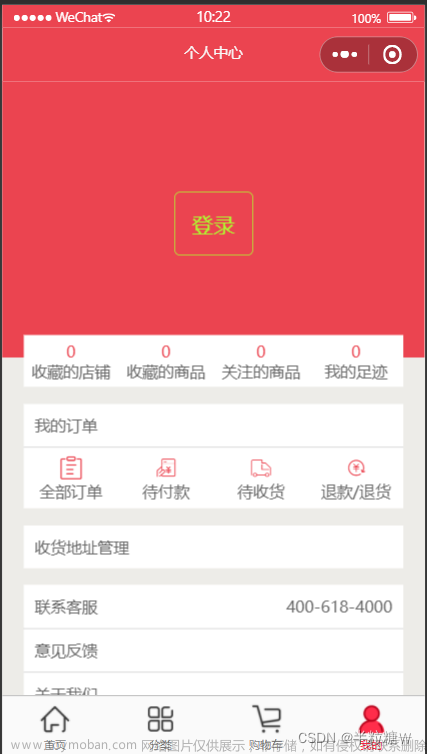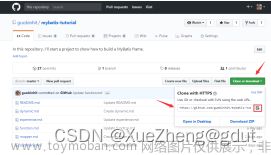♥️作者:小刘在C站
♥️个人主页:小刘主页
♥️每天分享云计算网络运维课堂笔记,努力不一定有回报,但一定会有收获加油!一起努力,共赴美好人生!
♥️树高千尺,落叶归根人生不易,人间真情
前言
我们之前在讲解 SQL 语句的时候,讲解了 DQL 语句,也就是数据查询语句,但是之前讲解的查询都是单表查询,而本章节我们要学习的则是多表查询操作上章讲到5.2本章继续
目录
MySQL
6 子查询
6.1 概述
1). 概念
2). 分类
6.2 标量子查询
案例:
6.3 列子查询
案例:
6.4 行子查询
6.5 表子查询
5.7 多表查询案例
1). 查询员工的姓名、年龄、职位、部门信息 (隐式内连接)
2). 查询年龄小于30岁的员工的姓名、年龄、职位、部门信息(显式内连接)
3). 查询拥有员工的部门ID、部门名称
4). 查询所有年龄大于40岁的员工, 及其归属的部门名称; 如果员工没有分配部门, 也需要展示出
来(外连接)
5). 查询所有员工的工资等级
6). 查询 "研发部" 所有员工的信息及 工资等级
7). 查询 "研发部" 员工的平均工资
8). 查询工资比 "灭绝" 高的员工信息。
9). 查询比平均薪资高的员工信息
10). 查询低于本部门平均工资的员工信息
11). 查询所有的部门信息, 并统计部门的员工人数
12). 查询所有学生的选课情况, 展示出学生名称, 学号, 课程名称
MySQL
MySQL是一个关系型数据库管理系统,由瑞典MySQL AB 公司开发,属于 Oracle 旗下产品。MySQL 是最流行的关系型数据库管理系统之一,在 WEB 应用方面,MySQL是最好的 RDBMS (Relational Database Management System,关系数据库管理系统) 应用软件之一。
MySQL是一种关系型数据库管理系统,关系数据库将数据保存在不同的表中,而不是将所有数据放在一个大仓库内,这样就增加了速度并提高了灵活性。
MySQL所使用的 SQL 语言是用于访问数据库的最常用标准化语言。MySQL 软件采用了双授权政策,分为社区版和商业版,由于其体积小、速度快、总体拥有成本低,尤其是开放源码这一特点,一般中小型和大型网站的开发都选择 MySQL 作为网站数据库。
6 子查询
6.1 概述
1). 概念
SELECT * FROM t1 WHERE column1 = ( SELECT column1 FROM t2 );2). 分类
6.2 标量子查询
案例:
select id from dept where name = '销售部'; select * from emp where dept_id = (select id from dept where name = '销售部');select entrydate from emp where name = '方东白';select * from emp where entrydate > (select entrydate from emp where name = '方东
白');6.3 列子查询

案例:
select id from dept where name = '销售部' or name = '市场部'; select * from emp where dept_id in (select id from dept where name = '销售部' or
name = '市场部'); select salary from emp where dept_id = (select id from dept where name = '研发部'); select * from emp where salary > any ( select salary from emp where dept_id =
(select id from dept where name = '研发部') );6.4 行子查询
案例:
select salary, managerid from emp where name = '张无忌'; select * from emp where (salary,managerid) = (select salary, managerid from emp
where name = '张无忌');6.5 表子查询
select job, salary from emp where name = '鹿杖客' or name = '宋远桥'; 1select * from emp where (job,salary) in ( select job, salary from emp where name =
'鹿杖客' or name = '宋远桥' );select * from emp where entrydate > '2006-01-01';select e.*, d.* from (select * from emp where entrydate > '2006-01-01') e left
join dept d on e.dept_id = d.id ;5.7 多表查询案例
create table salgrade(
grade int,
losal int,
hisal int
) comment '薪资等级表';
insert into salgrade values (1,0,3000);
insert into salgrade values (2,3001,5000);
insert into salgrade values (3,5001,8000);
insert into salgrade values (4,8001,10000);
insert into salgrade values (5,10001,15000);
insert into salgrade values (6,15001,20000);
insert into salgrade values (7,20001,25000);
insert into salgrade values (8,25001,30000);1). 查询员工的姓名、年龄、职位、部门信息 (隐式内连接)
select e.name , e.age , e.job , d.name from emp e , dept d where e.dept_id = d.id;2). 查询年龄小于30岁的员工的姓名、年龄、职位、部门信息(显式内连接)
select e.name , e.age , e.job , d.name from emp e inner join dept d on e.dept_id =
d.id where e.age < 30;3). 查询拥有员工的部门ID、部门名称
select distinct d.id , d.name from emp e , dept d where e.dept_id = d.id; 4). 查询所有年龄大于40岁的员工, 及其归属的部门名称; 如果员工没有分配部门, 也需要展示出
来(外连接)
select e.*, d.name from emp e left join dept d on e.dept_id = d.id where e.age >
40 ; 5). 查询所有员工的工资等级
-- 方式一
select e.* , s.grade , s.losal, s.hisal from emp e , salgrade s where e.salary >=
s.losal and e.salary <= s.hisal;
-- 方式二
select e.* , s.grade , s.losal, s.hisal from emp e , salgrade s where e.salary
between s.losal and s.hisal;6). 查询 "研发部" 所有员工的信息及 工资等级
select e.* , s.grade from emp e , dept d , salgrade s where e.dept_id = d.id and (
e.salary between s.losal and s.hisal ) and d.name = '研发部';7). 查询 "研发部" 员工的平均工资
select avg(e.salary) from emp e, dept d where e.dept_id = d.id and d.name = '研发
部';8). 查询工资比 "灭绝" 高的员工信息。
select salary from emp where name = '灭绝';select * from emp where salary > ( select salary from emp where name = '灭绝' );9). 查询比平均薪资高的员工信息
select avg(salary) from emp;select * from emp where salary > ( select avg(salary) from emp ); 110). 查询低于本部门平均工资的员工信息
select avg(e1.salary) from emp e1 where e1.dept_id = 1;
select avg(e1.salary) from emp e1 where e1.dept_id = 2;
select * from emp e2 where e2.salary < ( select avg(e1.salary) from emp e1 where
e1.dept_id = e2.dept_id );11). 查询所有的部门信息, 并统计部门的员工人数
select d.id, d.name , ( select count(*) from emp e where e.dept_id = d.id ) '人数'
from dept d;12). 查询所有学生的选课情况, 展示出学生名称, 学号, 课程名称
select s.name , s.no , c.name from student s , student_course sc , course c where
s.id = sc.studentid and sc.courseid = c.id ;备注 : 以上需求的实现方式可能会很多 , SQL 写法也有很多,只要能满足我们的需求,查询出符合条件的记录即可。
♥️关注,就是我创作的动力
♥️点赞,就是对我最大的认可文章来源:https://www.toymoban.com/news/detail-462132.html
♥️这里是小刘,励志用心做好每一篇文章,谢谢大家文章来源地址https://www.toymoban.com/news/detail-462132.html
到了这里,关于MySQL-多表查询(下)的文章就介绍完了。如果您还想了解更多内容,请在右上角搜索TOY模板网以前的文章或继续浏览下面的相关文章,希望大家以后多多支持TOY模板网!



![[Android Studio] 个人主页界面的实现](https://imgs.yssmx.com/Uploads/2024/01/802934-1.png)








